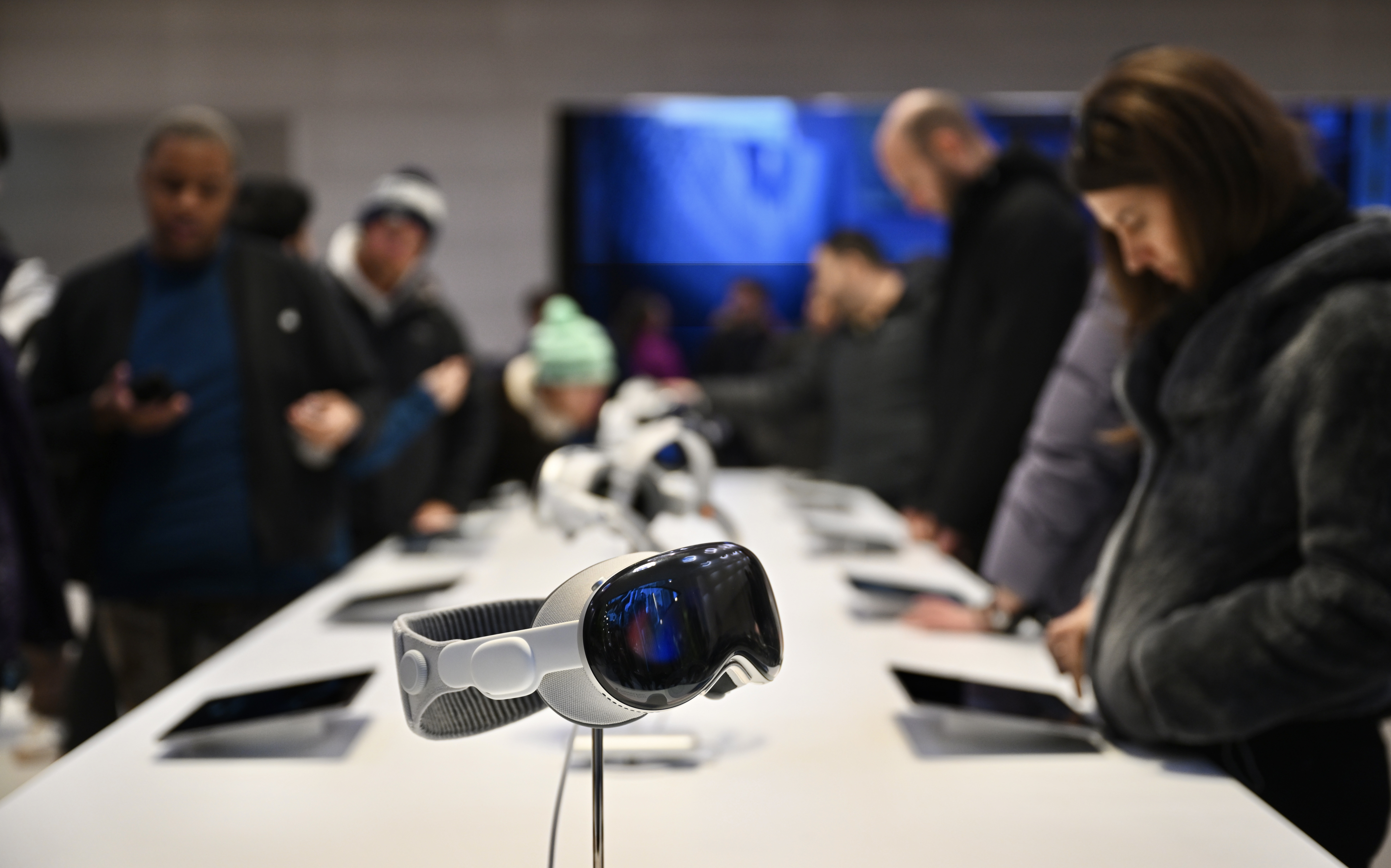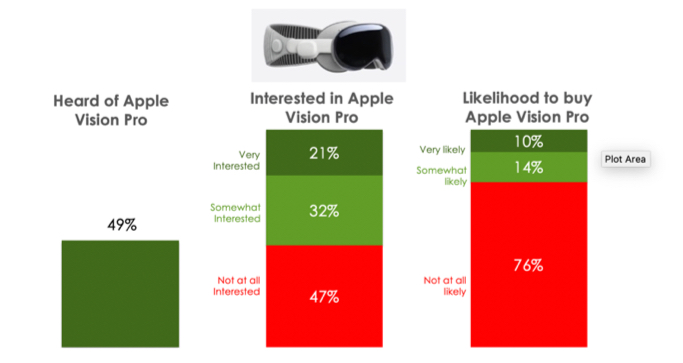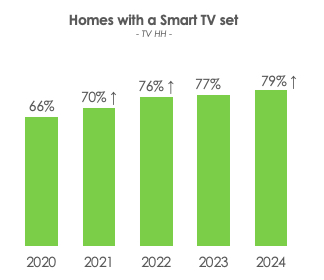
For Apple's pricey Vision Pro virtual reality headset, the consumer awareness and interest has arrived, but the $3,499.99 price point just might be out of reach.
According to Hub Entertainment Research's new "Connected Home" study, which surveyed an impressively large sample of 5,026 U.S. consumers ages 16-74, 49% of Americans are aware of the Apple Vision Pro. And 53% indicate some level in interest in the device.
But 76% of U.S. consumers said they were "not likely" to buy the gadget, with only 10% indicating a purchase was probable.

Apple debuted the Vision Pro at retail back in January and said it sold 200,000 units of the device at launch.
Apple is offering interest-free financing to consumers, allowing them to pay $291.58 a month for a year -- about what you'd pay monthly to lease a subcompact car.
According to a SmithGeiger Group survey conducted exclusively for the Penske showbiz trades, watching movies or TV shows ranked as the activity U.S. adults most want to do on Apple's mixed reality headset.
Apple had several TV commercials in heavy rotation around the product launch -- and during the heavily watched NFL postseason -- showcasing the Apple Vision Pro as a home theater replacement device. See the guy watching Napoleon in this spot:
For its part, Hub sees the Apple Vision Pro's market being limited to gaming right now, with room for expansion in the realm of movie and TV viewing. But the problem with that is, the research company says, consumers are really vibing on smart TVs, which are far cheaper.
Hub said penetration of smart TVs into U.S. homes has reached 79%.

“With more affordable and higher quality TVs available, it’s no surprise that people are continuing to upgrade their home theaters to better Smart TVs that make watching favorite streaming content easy,” says Jason Platt Zolov, consultant to Hub and study co-author. “The exciting debut of the Apple Vision Pro headset is a big step toward making advanced headset usage more mainstream -- although there is clearly room to grow in further integrating it into traditional living room behavior.”







